Oops sorry This one went up so late, going off to an Island does that to you !!!
Erichka welcomed visitors and members . Our prayers are with Anna and her Family.
QQ members were requested to order name badges if they did not have one.
QQ has been invited to exhibit quilts at the Guide Dog Ass premises in Witkoppen on Sunday the 16th May.
The group is still collecting all recyclables for Liz Dobbins who teaches at St Vincent for the Deaf.
Teachers were requested to prepare leaflets of their classes for hand out publicity at HobbyX. These are to be given to Irene before the time.Nola Mayes thanked members for the items made for Choc 100 bonnets were knitted. An additional request has been made is to knit some small scarves for the children.
Jeanette Botha presented the Youth Block Challenge. 3, pieces of fabric will be donated by Moda fabrics for a schoolchild, Primary or High School to make a 40cms x 40cms block under your guidance. This is to encourage the Youth to start sewing. Entry cost R25. Entry forms and additional info available on website www.into2crafts.co.za Please let make a huge effort to participate
Show and Tell.
Rosemarie Sheward ---- made a lovely Sewing Machine Cover from Novelty fabrics bought in Australia by a friend.
Pat Warren --- showed us a Xmas wallhanging with lettering plus an stenciled Angel Wallhanging.
Judy Pavey --- made a baby quilt using a piece of hand embroidery made by her late Mom. She quilted it magnificently.
Bernice Momonid -- made a lovely scrap quilt from the swap of 6inch squares in 2008 with Jenny Smith
Grace Nobili ---made a mini
“Ties of Friendship” made with scrap leftover ties given by Tertia and Erichka
Sandra Nobili -- made a memory quilt for her best friend’s wedding present.
Next Traveling Exhibition
The Theme has been announced;
“Jewels of the Earth”
Entry forms can be
Downloaded from the
S.A.Q.G website
Deadline Sept 2010
Size not be larger than 60cms x 1,20cms
GRANDMOTHERS
(by an eight year old schoolboy)
A grandmother is a woman
who has no children of her own,
so she loves the boys and
girls of other people.
Grandmothers have nothing to
do, they only have to be there.
If they take you for a walk, they go slowly past beautiful
Leaves and caterpillars.
They never say
“ Come along quickly,’
or ‘Hurry up, for goodness’ sake.’
They are usually fat, but not
Too fat to tie up my shoe laces.
They wear spectacles and
Sometimes take out their teeth.
They can answer any question,
For instance why dogs hate cats
And why God is not married.
When they read to us, they never leave anything out. They do not
mind if it’s always the same story.
Everyone should have a grandmother especially those
Who do not have television.Grandmothers are the only grown ups who have plenty of time.
APRONS
The inspiration for this topic came from Lynette Ho in the latter part of last year. There was a wonderful article on the history of aprons in her local newspaper the Southern Courier! She forwarded the article to me and I will share it with you shortly as it is delightful.
But it got me thinking about aprons and why I collect them. When I travel, I buy aprons from the countries that I have visited as a reminder of happy times, or the food I have enjoyed, just as my husband buys beer mugs!
An apron is an outer protective garment that covers primarily the front of the body. It may be worn for hygienic reasons or simply to protect clothes from wear and tear.
The apron is a common part of the uniform in many occupations, e.g. waitresses, nurses and domestic workers. Many homemakers also wear aprons to protect their clothes. In time gone by, aprons were worn over garments (mostly by women) to protect their clothing. Garments were expensive and had to endure. In other words, the apron protected clothing and could easily be replaced as it was inexpensive to make or replace.
In addition to cloth, aprons can be made from a variety of materials. For example, rubber aprons are commonly used by people working with dangerous chemicals, lead Aprons are worn by X-ray technicians who work near radiation. Old fashioned carpenters wore aprons with pockets to keep various tools on hand.
Waterproof household aprons, made up of oil cloth or PVC are suitable for cooking and washing dishes. These aprons can just be wiped down and save on laundry.
Believe it or not, aprons have various styles, depending on the use or purpose of the apron. Basically, there are 2 types: the waist apron which covers the body from the waist down, and a bib apron which also covers the upper part of the body.
The apron is usually held in place by 2 ribbon-like strips that tie at the back. A bib apron usually has a strap around the neck.
Aprons today come in many shapes and colours (like our fabric), from vintage to Disney cartoons, and can commemorate world events, e.g. K2. Sadly, the apron is not as popular today as it used to be, largely due to the fact that we have access to cheaper clothing and washing machines. I can still remember my late mother’s aprons and the smart hostess one in which she served her canapes at dinner parties! This was in the late 1950’s – I’m dating myself!
While researching aprons, I was amazed to learn just how popular aprons (vintage and retro) are. There has been a huge resurgence of interest in aprons and patterns abound, whether for traditional Japanese field garments to the feel good “Norman Rockwell” era in the 1950’s, which depict family life, far removed from our frenetic lifestyles today!
The History of ‘Aprons’
I don’t think our children know what an apron is.
The principal use of Grandma’s apron was to protect the dress underneath, because she only had a few, it was easier to wash aprons than dresses and they used less material, but along with that, it served as a potholder for removing hot pans from the oven.
It was wonderful for drying children’s tears, and on occasion was even used for cleaning out dirty ears!
From the chicken coop, the apron was used for carrying eggs, fussy chicks, and sometimes half-hatched eggs to be finished in the warming oven.
When company came, those aprons were ideal hiding places for shy kids.
And when the weather was cold, grandma wrapped it around her arms.
Those big old aprons wiped many a perspiring brow, bent over the hot wood stove.
Chips and kindling wood were brought into the kitchen in that apron.
From the garden, it carried all sorts of vegetables. After the peas had been shelled, it carried out the hulls.
In the fall, the apron was used to bring in apples that had fallen from the trees.
When unexpected company drove up the road, it was surprising how much furniture that old apron could dust in a matter of seconds!
When dinner was ready, Grandma walked out onto the porch, waved her apron, and the men knew it was time to come in from the fields to eat.
It will be a long time before someone invents something that will replace that ‘old-time apron’ that serves so many purposes.
Remember:
Grandma used to set her hot baked apple pies on the window sill to cool.
Her granddaughters set theirs on the window sill to thaw.
They would go crazy now trying to figure out how many germs were on that apron.
I don’t know anyone whoever caught anything from an apron.
Forwarded by Anne Boxall to the Southern Courier
Colour Challenge.
Entry fee R20
Size no side bigger than 75 cms.
Date of Completion 1st August 2010
Each quilter will receive an envelope with 3 colour swatches in it.
You are to use one colour from each family and you are allowed to add one more colour No cheating your swatches are numbered according to your entry number. When you are finished you are required to pin the colour chart to the back of your quilt We would like some original work from each entrantQuilts must be 3 layers, quilted. Labeled and with a sleeve.
Quilt Facts –
What each Quilter should know
When Quilts are handed in for exhibitions they must each have 2 very important things
A label with your name, the quilts name, date made etc.
A 4 inch wide sleeve so the exhibitors can hang your quilt properly and not just pinned up.In addition once quilts are taken down after an exhibition they should be signed out if you are collecting personally or there should be someone that you know will be responsible in getting your quilt back to you. In this way control can be had over the quilts and there is less likelihood of quilts going missing
Friday, April 9, 2010
Subscribe to:
Post Comments (Atom)











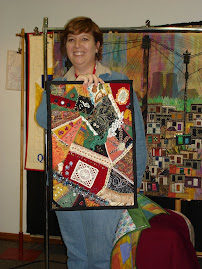
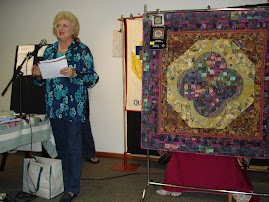
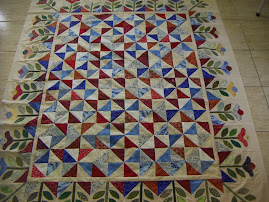
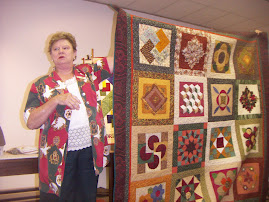
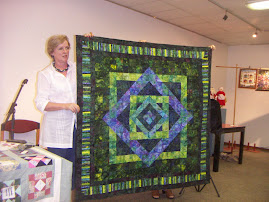Tilly+de+Harde+Where+have+all+the+Butterflies+Gone..jpg)
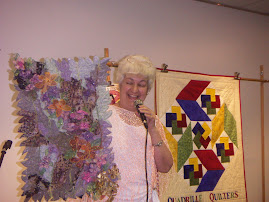Colleen+Harris+Midsummer+nights+dream.jpg)
.jpg)
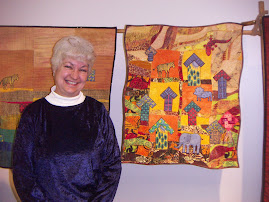
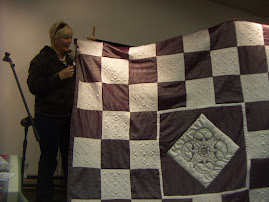.jpg)
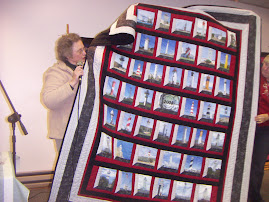
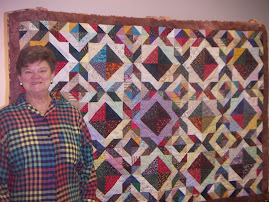
Rosemarie+Eriksson+Embroidered+quilt.jpg)
Berlize+tulip+quilt..jpg)


.jpg)
+Mary+Ash+Baltimore.jpg)


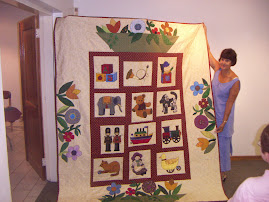
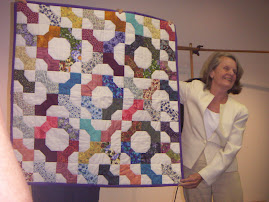
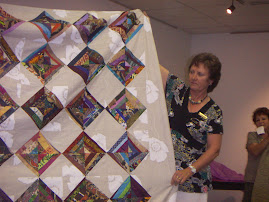
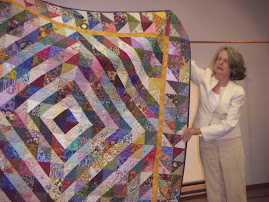
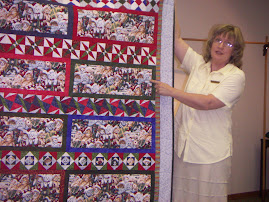




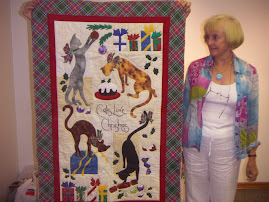
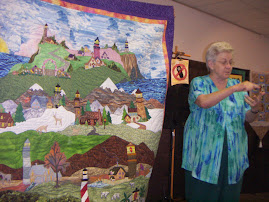

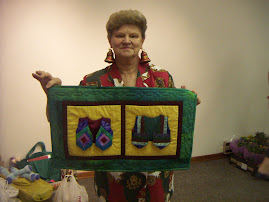
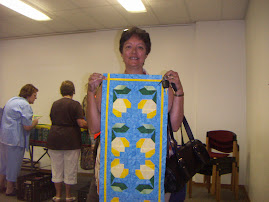
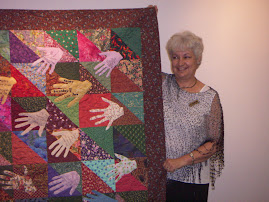
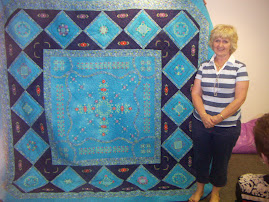
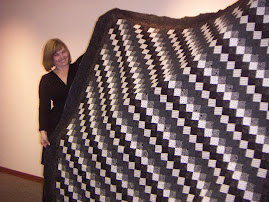
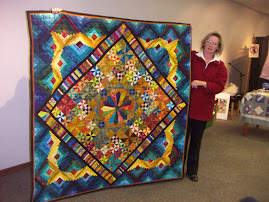
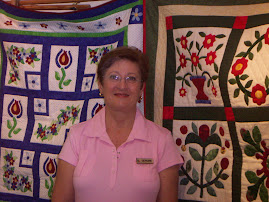

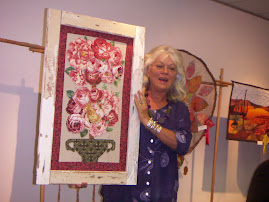
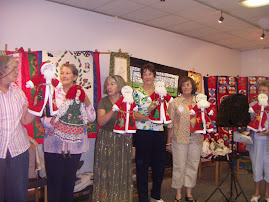.jpg)
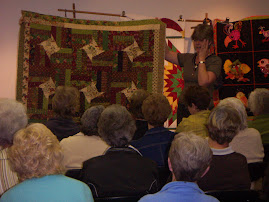.jpg)

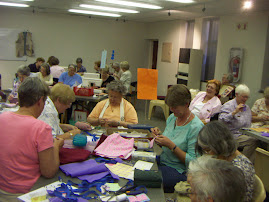
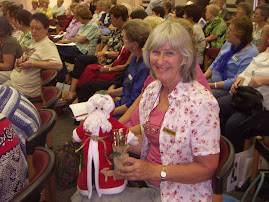
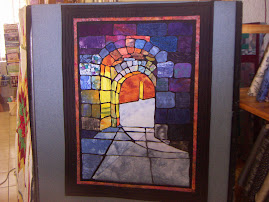
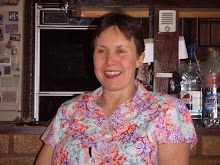


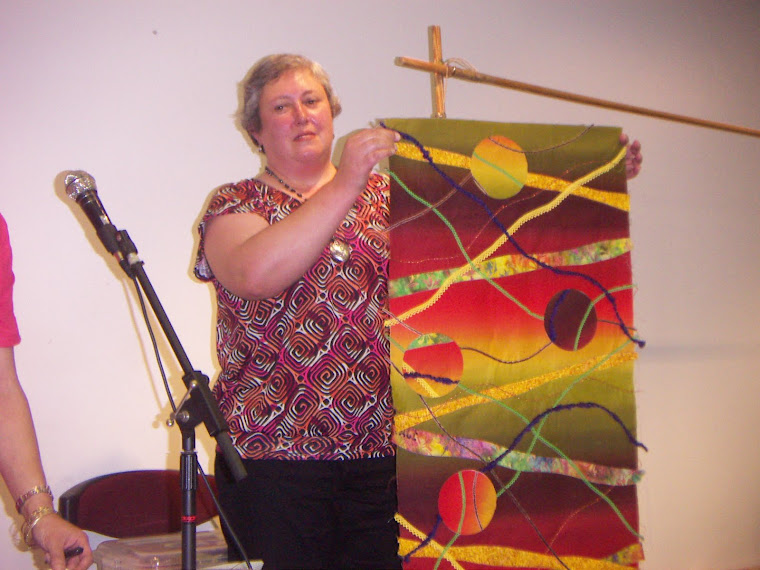Tertia+Darn+Quilt.jpg)
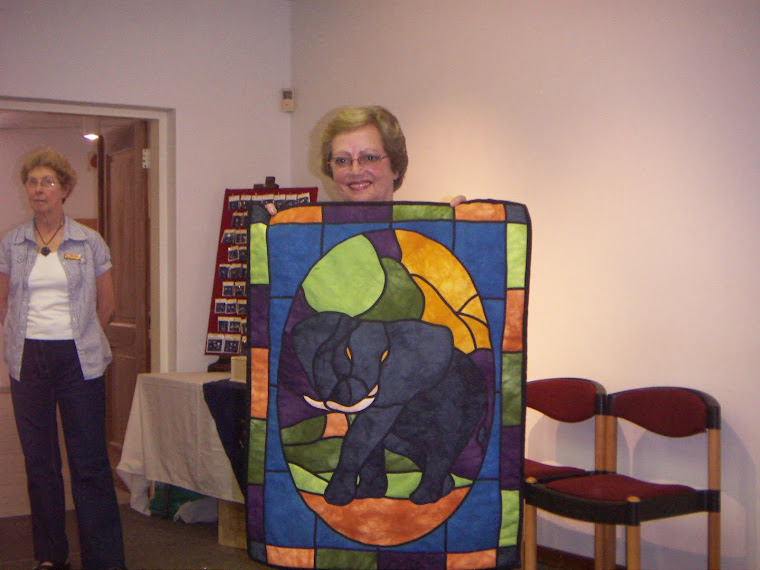Yvonne+jordan+Elephant+quilt.jpg)
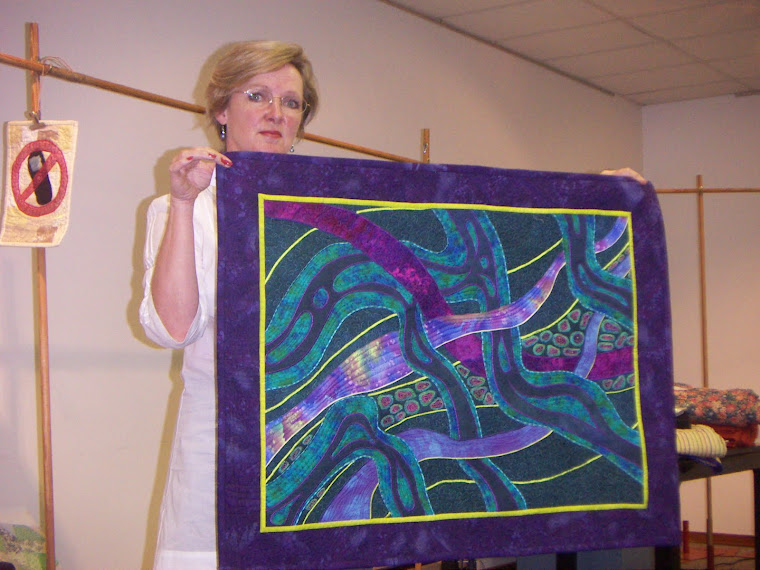Tilly%27s+Goodbye+to+the+Grid.jpg)
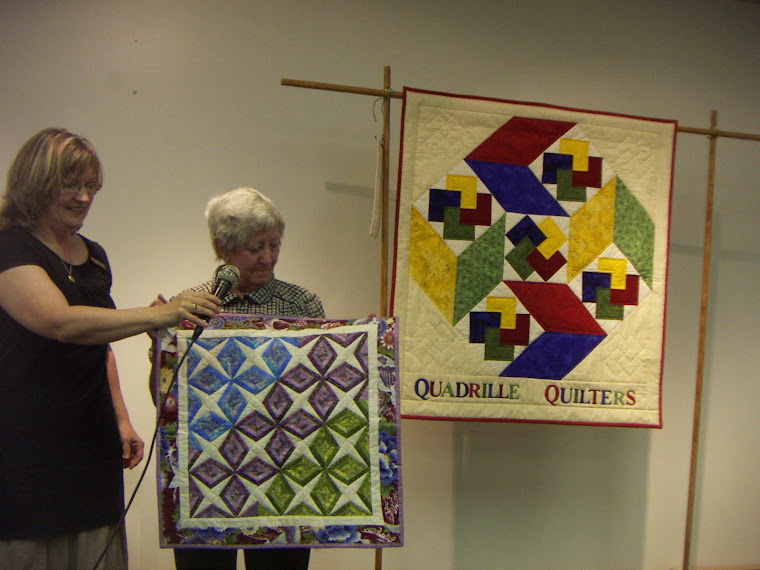
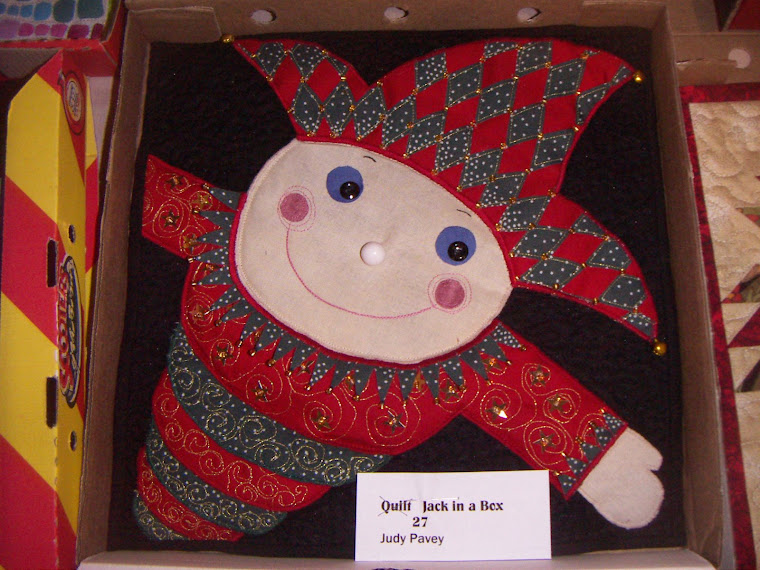
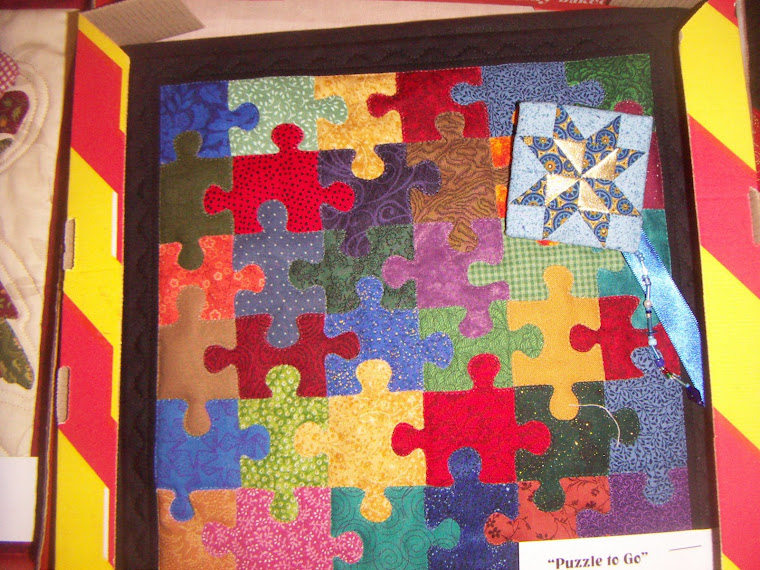
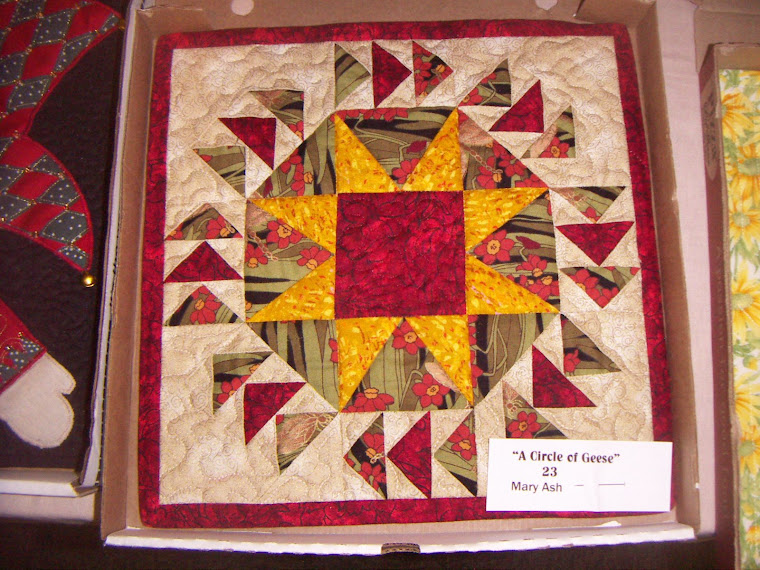
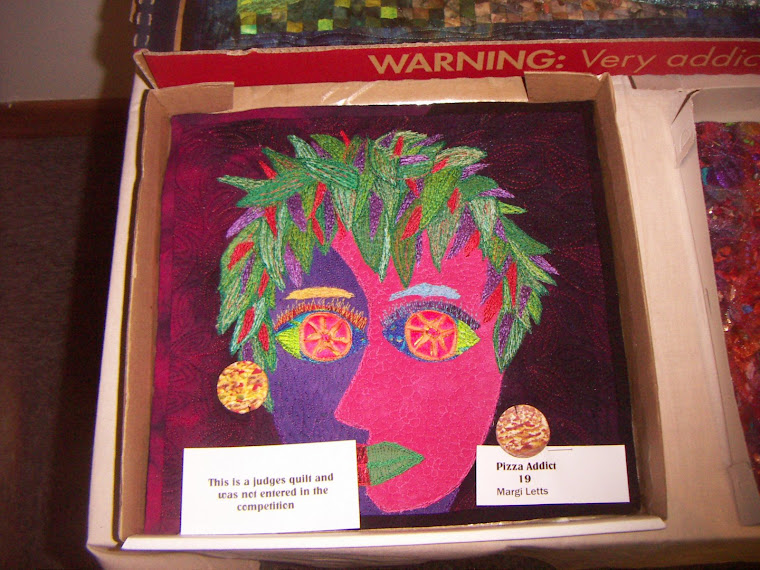
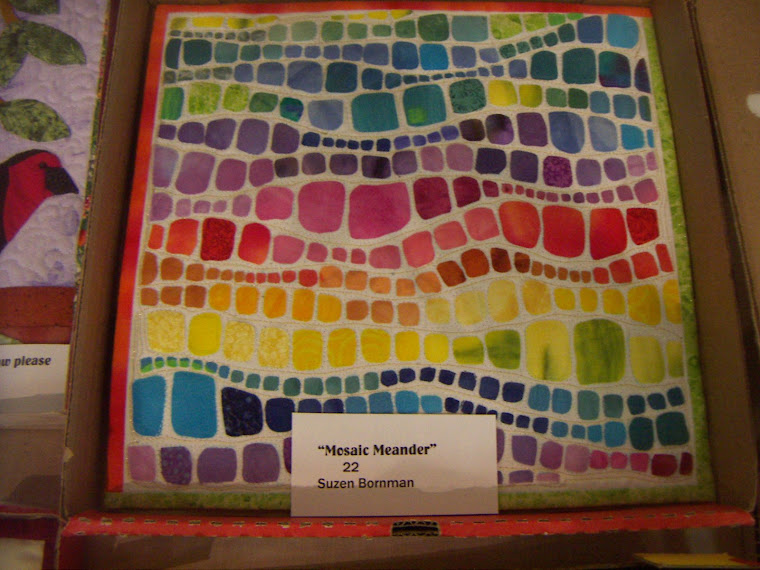
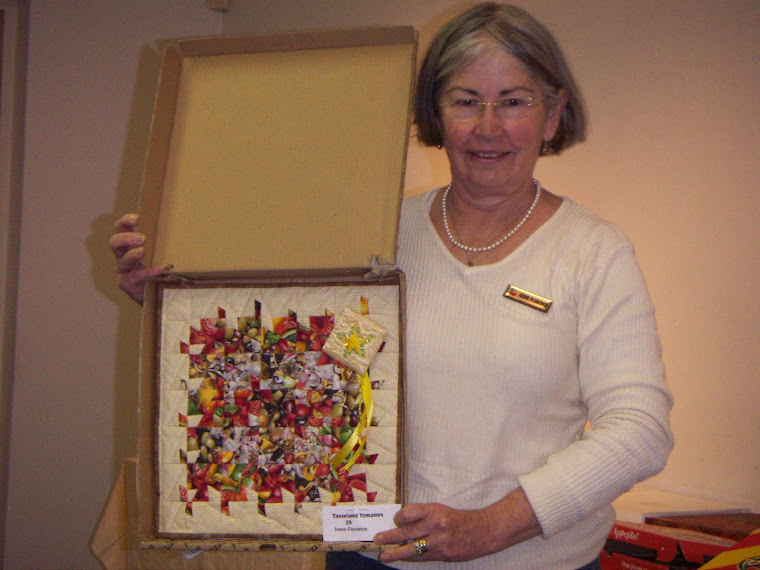


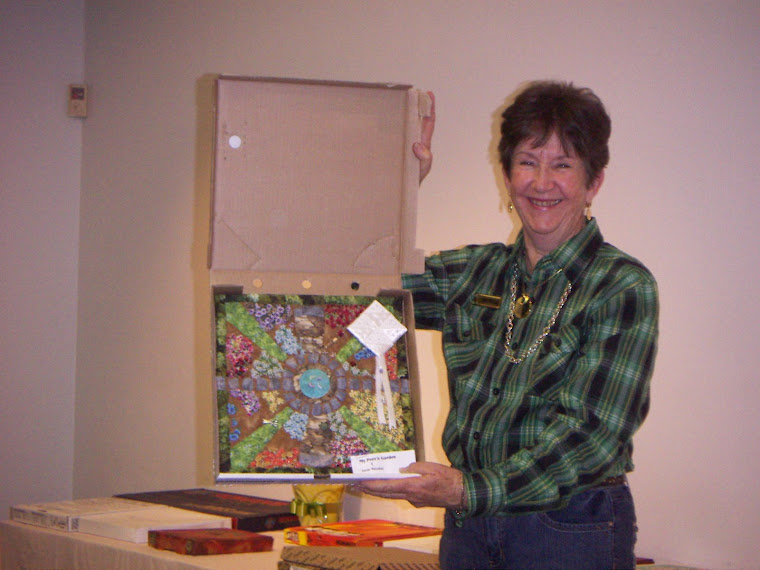


Dorinda%27s+Stack+and+Whack.jpg)
.jpg)
Ira%27s+landscape+lighthouse..jpg)
.jpg)


.jpg)

.jpg)




.jpg)

No comments:
Post a Comment